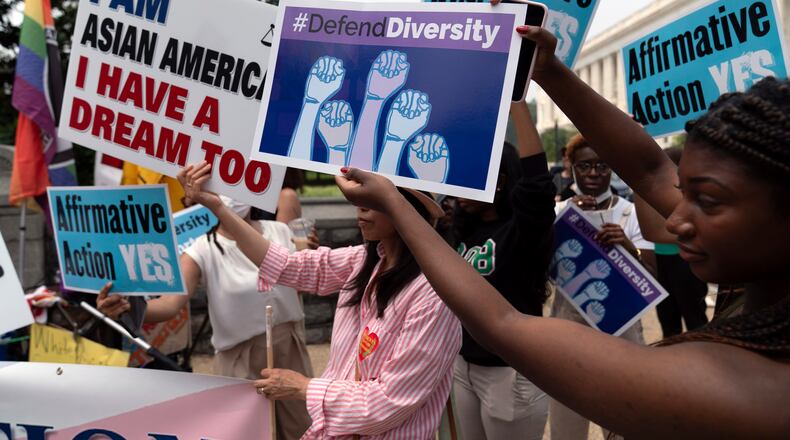Yost’s guidance was based on the U.S. Supreme Court’s June 2023 decision in Students for Fair Admissions v. Harvard, which banned consideration of students’ race in college admissions, except under limited conditions.
Yost’s interpretation of the court’s opinion should not have been a surprise. The day after the Supreme Court’s decision involving Harvard and the University of North Carolina, he signaled that colleges and universities should clamp down on race-conscious programs. He warned that “disguised” race-conscious admissions policies are still race-conscious admissions policies.
So, are scholarships using race as part of their criteria things of the past? The short answer is “no.” But, based on a review of the case from Harvard-UNC and other precedent, such programs will have to pass a tough judicial test. Even then, race can’t be the only factor.
When the Supreme Court reviewed the admissions programs at Harvard and UNC, it used the strict scrutiny standard, the highest level of review under the 14th Amendment’s equal protection clause. To pass muster, rules or laws affecting fundamental rights must serve a “compelling state interest” and be written to minimize their effect on such rights.
Following Harvard-UNC, campus leaders have some guidance. In August 2023, for example, the federal departments of Justice and Education provided advice on how schools could keep a diverse student body without considering race in admissions decisions. Factors such as socioeconomic status, ZIP codes, high schools attended, academic achievements and demonstrated contributions to society could become more important in admissions decisions. Yet, these agencies were silent on how the court’s ruling would affect scholarships and financial aid.
In 2003 and again in 2016, the court acknowledged that a diverse student body is a compelling interest. But in 2023, Harvard and UNC were unable to pass the strict scrutiny test. Both schools claimed their programs promoted diversity. The court ruled the universities’ race-conscious admissions programs unconstitutional and discriminatory because they involved racial stereotyping, lacked “sufficiently focused and measurable objectives warranting the use of race,” and “unavoidably employ race in a negative manner.”
Some legal scholars think the court’s rulings banned the use of race in awarding scholarships as well as in admissions. However, this overlooks two important facts: the court did not rule that diversity can never be a compelling state interest or that race can never be considered.
True, the use of race in many programs receiving federal assistance is now restricted, but it has not been completely outlawed. Even race-conscious admissions aren’t completely off the table – if programs can pass the strict scrutiny test. Consideration of a student’s race might be allowed if there is “an exceedingly persuasive justification that is measurable and concrete enough to permit judicial review,” the court said.
For example, the Supreme Court allowed race-based policies at U.S. military academies on the theory that a strong national defense – a compelling state interest – requires a diverse officer corps.
Litigation has challenged the use of race in scholarship and financial aid programs funded from outside universities, including fellowships considering race when helping underserved students.
In contrast, some campus leaders and lawyers argue that the Harvard-UNC decision should be limited to race-conscious admissions. They maintain this case does not apply to other programs where race might be used as a factor.
Strategies for diversity in admissions that don’t take race into account, like those suggested by the departments of Education and Justice, can serve as a guide for college and university administrators as they work to maintain diversity. Time will tell.
Jeffrey C. Sun, J.D., Ph.D. is a professor & Distinguished University Scholar at the University of Louisville.
Charles J. Russo is the Joseph Panzer Chair in Education and Research Professor of Law at the University of Dayton.


